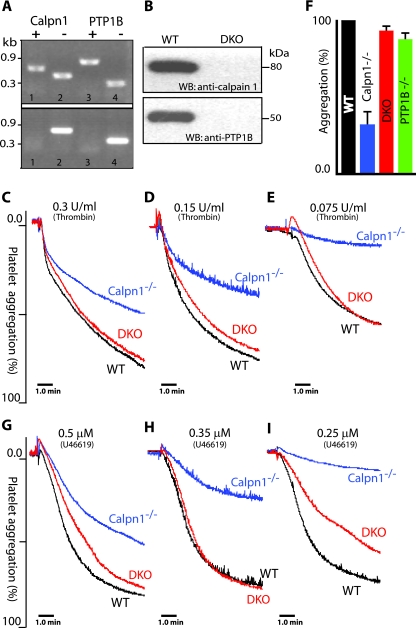FIG. 6.
Generation of double knockout mice lacking calpain-1 and PTP1B and correction of the platelet aggregation defect. (A) Genomic DNA was analyzed for the corresponding genotype by PCR. Mice heterozygous (top gel) for both calpain-1 (lanes 1 and 2) and PTP1B (lanes 3 and 4), and double knockout mice (bottom gel) for calpain-1 (lane 2) and PTP1B (lane 4) are shown. (B) Western blot (WB) analysis of erythrocyte membrane lysates with anti-calpain-1 and anti-PTP1B antibodies. The erythrocytes were from WT and double knockout (DKO) mice. (C to I) Correction of platelet aggregation defect in the double knockout (DKO) mice. Gel-filtered platelets were analyzed for platelet aggregation response with thrombin (C to E) and with U46619, a stable thromboxane A2 analogue (G to I). (F) Quantification of platelet aggregation at various concentrations of thrombin in the WT, calpain-1 null (Calpn1−/−), double knockout (DKO), and PTP1B null (PTP1B−/−) mice (P < 0.05). For statistical analysis, the extent of platelet aggregation in the WT mouse platelets at each dose was taken as 100%. The platelet aggregation response at comparable doses in the mutant platelets was normalized to their respective dose in the WT platelets. Each bar graph shows the mean platelet aggregation plus SEM for a mouse genotype. Data were analyzed using one-way analysis of variance by GraphPad Prism software.

